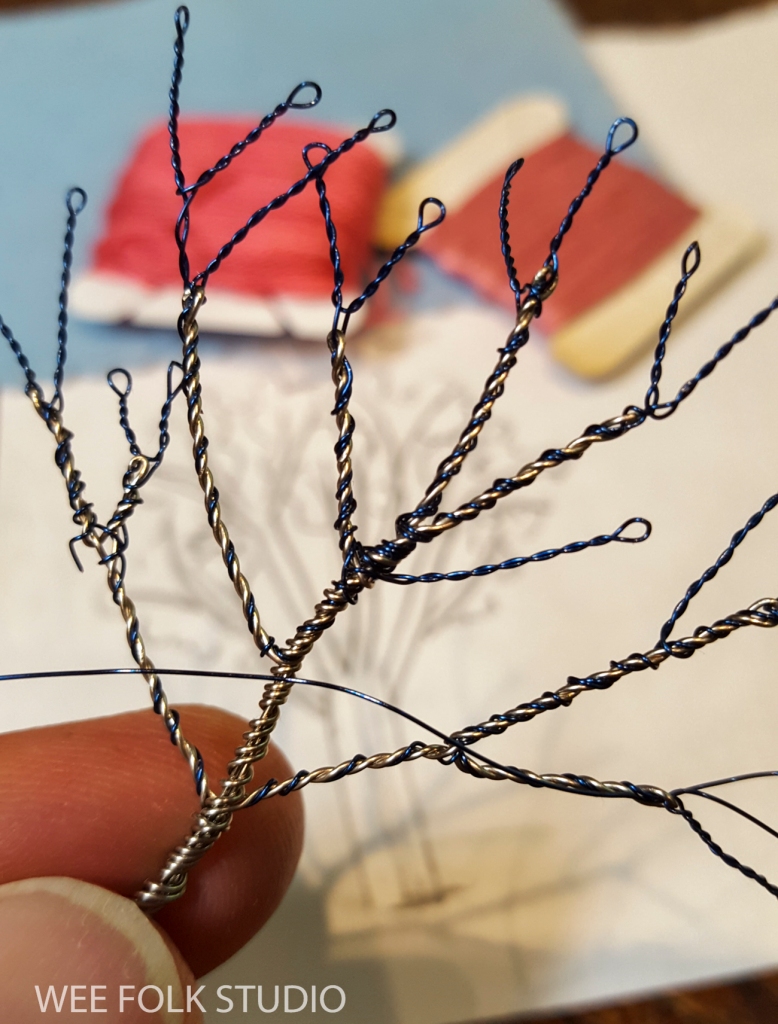I’m happy to report that after almost a year of work, Summertime, the newest scene in my seasonal landscape series, is finished! Now all four seasons will be included in my upcoming exhibition at the Southern Vermont Arts Center. The Wee Worlds of Salley Mavor will be on view Sept. 30, 2013 – Jan. 7, 2024.
Further ahead in this post, you will find information about the exhibition, a preview of future posts about making Summertime and new items in my Etsy Shop.
I don’t know why Summertime took so much longer to complete than the other seasons in the series. Mossy Glen, Frosty Morning and Harvest Time also have a gazillion stitches, but they each only took about 4 months to make. It could have something to do with the change in my daily routine since my grandson, Elias was born in January. Playing with the baby is now high on my list of essential activities, which includes sleeping, eating and stitching. Obviously, my priorities have shifted!

To reach the exhibition deadline, I spent the past few months stitching as much as possible, including in the evenings, like I used to do when my children were little. That’s why this is the first blog post I’ve written in months!
As with the other landscapes in the 4 Seasons series, I documented the process of making Summertime with photos and videos along the way, so there’s a lot of material to share in future blog posts, including a varied assortment of Stitch Minute videos.

If you’ve followed me on Instagram and Facebook during the past year, you’ve seen Stitch Minute videos that show different aspects of my process. I’m happy to offer photos and minute-long peeks over my shoulder while I work, but please don’t ask me to explain my techniques in detail. Much of what I do is instinctual and I worry that over-analyzing my process would spoil the magic for me. To learn my personal philosophy about sharing knowledge, please read my post to teach or not to teach.
Here are two Stitch Minute videos that I made in August, while working on Summertime.
New 4 Seasons Items in my Esty Shop
Now that the seasonal landscape series is finished, I’m excited to offer note cards, jigsaw puzzles and archival prints of all four seasons:
Summertime, Mossy Glen, Harvest Time and Frosty Morning.
My Etsy Shop offers FREE SHIPPING on US orders of $35.00 or more. I’m sorry to disappoint my international fans, but due to the prohibitive cost of shipping overseas, I now only take orders from the USA and Canada.



The Wee Worlds of Salley Mavor exhibition
Yesterday, my artwork was picked up and driven in a van to Manchester, Vermont for my exhibition at the Southern Vermont Arts Center. It’ll be a large show, with over 75 pieces, including the 4 Seasons and the original illustrations for my most recent picture book, MY BED. On view will be a wide range of work, from early in my career to today, as well as a wall covered with over 100 wee folk dolls!

There will be a lot to enjoy at the Southern Vermont Arts Center this fall, especially for those of you with a playful bent. I’m so pleased that my work will be just around the corner from a fascinating and whimsical display of the late illustrator Ashley Bryan’s collection of toys, objects, puppets and paintings. Ashley Bryan: The Spirit of Joy and The Wee Worlds of Salley Mavor will be on view Sept. 30, 2013 – Jan. 7, 2024. I hope to see some you at the opening reception on Sept. 30th, where l will give a gallery talk at 3:00 PM.


To keep up with new posts, please subscribe to this blog. Your contact info will not be sold or shared. If you’d like to see more frequent photos tracking the projects in my studio, please follow me on Facebook and/or Instagram.


































































